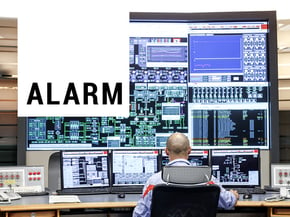Process Safety Blog
How reliable is consequence modelling?
At Safety Solutions we are no strangers to consequence modelling. One of the most common queries we get is around model uncertainty, and when it comes to consequence modelling there is a lot of it! So with all the uncertainty we have in the results, just how useful are they?
Consequence modelling is used to estimate the severity of hazardous scenarios for processing plants. Several different types of models have been established to calculate the thermal effects of fires, overpressures from explosions, and the dispersion behaviour of large-scale gas releases.
Many of the methods used for consequence modelling have been around for a long time, some dating back several decades, originally in the form of empirical models, however more complex models have popped up over time, including the use of CFD.

What’s the problem with consequence modelling?
A great deal of research and development has been put into consequence modelling methodologies, and with the power of today's computing, we can now run very complex and precise models based on first principles. However, even with all we know about the processes behind gas dispersion, explosions, and fires, all consequence modelling has a relatively high degree of uncertainty when compared to other engineering models such as those used for determining the structural integrity of a building or the power output of a boiler. It’s worth understanding just why that is, and what repercussions it has for your facilities safety assessment.

|

|

|
| Find out about our upcoming Hazardous Area Classification Training Course HERE! | We offer Consulting Services for Hazard Identification HERE! | Find out about our upcoming HAZOP LEADER Training Course HERE! |
Scenario inputs – garbage in, garbage out
Scenarios used for consequence modelling are typically much less predictable than for other types of modelling such as boiler power output. For example, when modelling the dispersion of toxic gas from a leak in a tank that’s outside, the results are heavily dependent on the wind conditions, atmospheric stability, presence of inversion layers, orientation and size of the leak, the list goes on...

There are countless combinations of these parameters that we could use to model the scenario, and they can result in effects spanning from just a few meters up to several hundred meters. This is particularly prevalent when we start dealing with more complex models, for example when using CFD to model the dispersion of gases, the number of variables to set can be orders of magnitude greater than with empirical models.
Levels of concern – tis but a scratch
Another contributor to the overall uncertainty we have in consequence modelling lies in how we interpret the results. It is all well and good to develop a model and get a result showing, for example, the concentration of a toxic substance at any given location and time downwind of a release, however, we still need to interpret at what concentration/exposure duration do we consider harm may occur.

A great deal of work has been done investigating the harmful effects on people from exposure to toxic materials, overpressures, and thermal radiation, however, once again there is a great deal of uncertainty that arises when interpreting results in a practical way.
For example, looking at published data for toxicity we can find a vast number of different values, such as AEGL, IDLH, toxic doses, and countless more. All too often we find that the threshold concentration for a specific substance considered capable of causing fatalities or serious harm can have differences over 100% between different publications and standards.
Model Scale – a very big problem
Many consequence models are empirical, that is they are based on a series of real-life tests under controlled environments where the model is calibrated against measured parameters. With models like these, it’s critical to understand when it is appropriate to apply them and when it is not. A model developed using tests within a certain scale can become invalid when modelling scenarios of a different scale, and with the size of the scenarios we typically model, it is not always possible to run tests at an appropriate scale.
For example, when modelling thermal radiation from pool fires, moderately sized pool fires can behave much differently to very large ones where they get to the point where the centre of the pool doesn’t get sufficient oxygen to burn resulting in a significant change in behaviour.
CFD modelling also has significant limitations when it comes to scale, particularly where turbulence is involved as computing turbulence simultaneously for the micro and macro scale becomes computationally expensive and complex.
So what is the point of consequence modelling?
Even though consequence modelling has a high degree of uncertainty, it is still a very helpful tool for assessing risk. It helps us determine whether a hazard scenario might only cause harmful effects within the immediate vicinity or whether it might affect neighbouring sites and properties. It can also tell us whether a scenario is capable of causing serious harm at all.


When developing consequence models, we normally simulate the ‘perfect storm’ where input conditions are selected to give the worst possible outcome. This gives us a reasonable maximum extent for a scenario, which can be fed back into emergency response planning and risk assessment.
Conclusion
In conclusion, consequence modelling is a helpful tool that can help us determine whether a scenario has a large area of effect or a small one and help us focus in on the most significant hazards. It can also be helpful when developing emergency response planning, where conservatism is used to get the maximum possible hazard extent.
There are a range of different types of models available, and the more complex options such as CFD are not necessarily more accurate, nor is the extra effort necessarily justified. If I can stress only one point, it would be that when it comes to consequence modelling, when in doubt be conservative and treat any results with a grain of salt.
As an added piece of guidance, we have developed a checklist that we use when auditing consequence modelling work we have carried out for facilities. This checklist helps to ensure any dispersion modelling for a facility has adequately considered the range of conditions that may be present during a major incident.
Ready to take your process safety strategy to the next level?
Explore our PROCESS SAFETY TRAINING COURSES HERE, to build practical, defensible safety solutions. Visualise potential incident outcomes to strengthen decision-making. Contact us about Consequence Modelling Services.
Have questions or need guidance? GET IN TOUCH. We're here to help.

